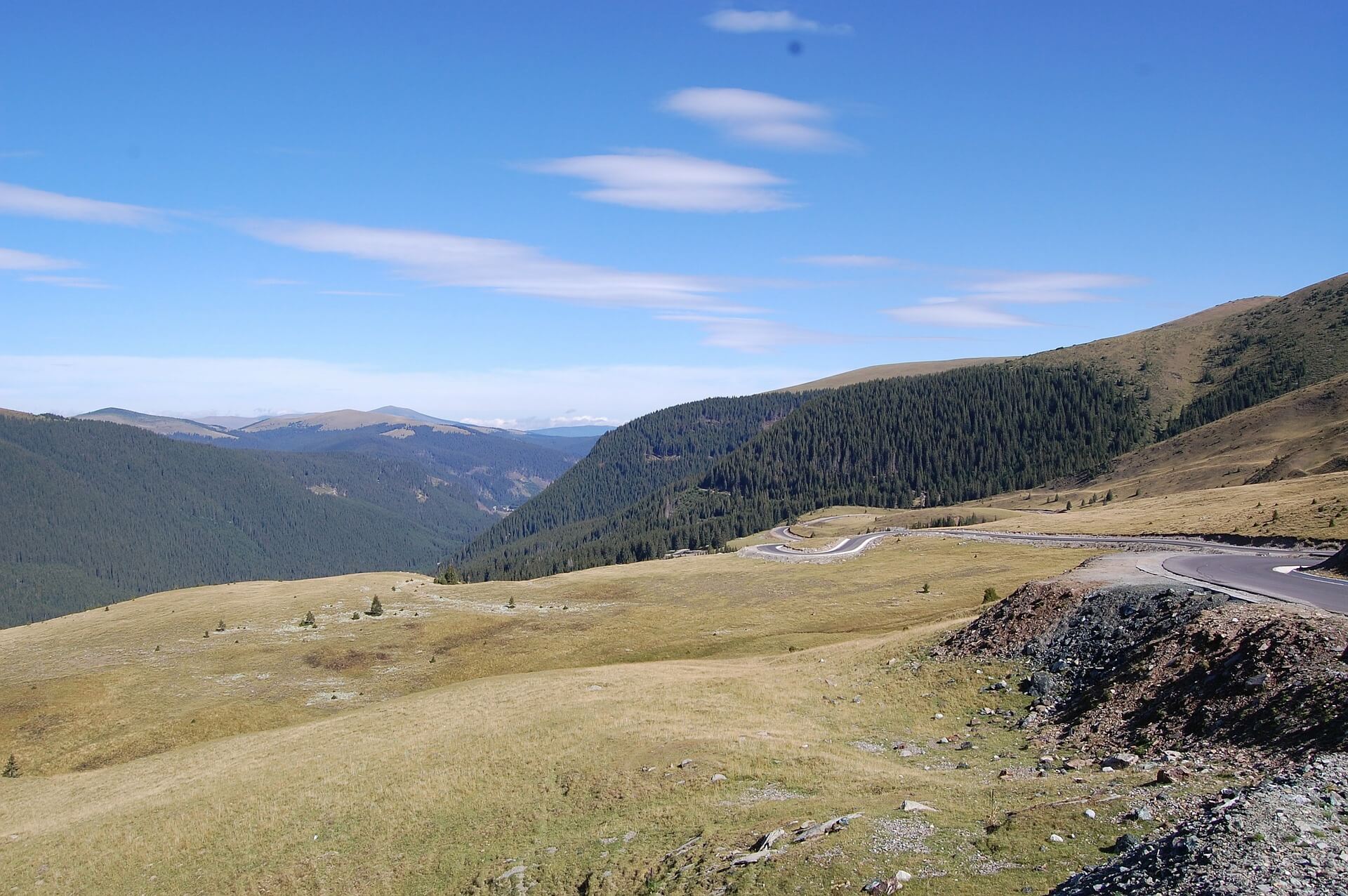
Europe’s Curviest Roads
A Motorcyclist’s Guide to Romania
What comes to mind when you think of Europe’s curviest roads? Stelvio Pass and the Amalfi Coast in Italy are the usual suspects, but if you’re willing to venture a little eastward, there’s a hidden motorcycling heaven waiting for you in… Romania.
Home to the rugged Carpathian Mountains, Romania boasts spectacular twisties, jaw-dropping mountain views, and roads leading through deep dark woods steeped in folklore legends of ancient kings. The region of Transylvania is easily one of the most motorcycle-friendly places to explore in Romania, and it has two stunning routes on the menu: Transalpina and Transfagarasan.

Both of these roads are worth a visit, and since they’re in close proximity to each other, you can ride them both in one trip.
But what’s the difference between the two, what’s the best way to ride them, and where do you find them?
Transalpina: The King’s Road
Built over an ancient route dating back to the Roman times, Transalpina (Route DN67C) was built by King Carol II in 1938. One of the highest roads in Romania, Transalpina reaches an elevation of 7,038 ft (2145 m) at Urdele Pass, the highest motorable point in the country.
The length of the ride is just 87 miles (ca. 140 km), but it takes at least three hours if you’re to enjoy the views and the curves. Connecting the small towns of Novaci and Sebes, Transalpina is best ridden from South to North in order to truly have fun on the steep switchbacks and see the best views. The most awe-inspiring section is between Novaci and Obarsia Lotrului. This is where you really feel like a pioneer discovering some wild, faraway place; as you ride, you’ll likely see shepherds walking alongside their animals and wild donkeys that offer wander into the road expecting treats from passing motorists.

Transalpina is perhaps lesser known than its more famous twin road, the Transfagarasan, but for the best Transylvania riding experience, the King’s Road is a must. The route itself is centuries old, and riding here feels like entering some distant era – while the road is paved, it still feels like an ancient mountain route where time has stood still.
Ceausescu’s Folly: Transfagarasan
Road DN7C, just East of Transalpina, is already becoming more and more popular among European motorcyclists who have dubbed it “The Stelvio of Romania” and call it the most beautiful road in the entire country. Winding up and down the mountains between Bascov and Cartisoara, Transfagarasan is a spectacular 100-mile stretch across the windswept Carpathian Mountains passes and highlands.
Transfagarasan, as opposed to Transalpina, was built in the early 1970s by Romania’s ruthless dictator Nicolai Ceausescu. There are two versions of why Ceausescu built the road: one, that he feared a Soviet invasion and wanted quick access through the mountains for the country's own military; and two, he wanted Transfagarasan to surpass Translapina and make a mark in the history books. Which version is true remains unknown, but Ceausescu spared no expense – human or financial – to build the road: he used more than 6 tons of dynamite to blast through the living rock in high altitudes, and the road was built in record time. To this day, Transfagarasan is often called “Ceausescu’s Folly” because of the mad rush to build it, but mad or not, the end result is nothing short of stunning.

Transfagarasan is better paved than Transalpina, and some of its wide, sweeping bends feel like racetrack curves. As the road climbs higher and higher, there are several lookout points to stop and take in the magnificent views. While the road quality is better, the feeling of being someplace wild and remote persists on the Transfagarasan, too, especially if you’re riding there off-rseason.
Which road is better, the Transalpina or Transfagarasan? That’s up to you to decide: ride them both, enjoy the Carpathian Mountain views, and let us know whether you enjoyed the King’s Road or Ceaucescu’s Folly more.
When you’re planning your Romania trip, keep in mind that both of these roads may be closed from late fall to early spring due to heavy snowfall. The best time to ride Transylvania is between May and mid-September. And if you want to avoid the crowds, aim for weekdays or ride there later in the season to enjoy some solitude and the breathtaking views without any tourist traffic in sight.